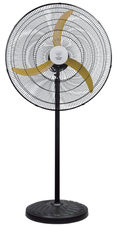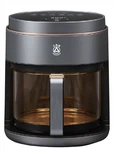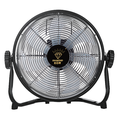In 2009, British tech manufacturer Dyson released a product called the Air Multiplier – a fan that was quieter, more power-efficient and safer than others, and to top it all off, it didn’t have any blades.
It sounds like technological witchcraft. So how does it work?
When you think of a fan you probably think of two or more blades attached to a central spinning hub, producing a torrent of air. These blades can slice off a wayward finger, though, and fitting a protective cage to the fan blocks some of the airflow.
The Air Multiplier works differently. Using a combination of clever physics and aerodynamics it “multiplies” the air it sucks in, so uses less energy and generates less noise in the process.
It all starts with air entering through slits at the fan’s base. A small brushless electric motor runs a tiny fan with asymmetrically aligned blades which pushes air through a set of stationary blades that smooth the airflow.
How does a bladeless fan work?
Step1: Air is drawn in
Up to 5.28 gallons of air per second is drawn in by an energy-efficient, brushless motor. A combination of the technologies used in turbochargers and jet engines generates powerful airflow.
Step2: Air is accelerated
Airflow is accelerated through an annular aperture. It passes over a 16° airfoil-shaped ramp, which channels its direction.
Step3: Air is induced
Air behind the Dyson Air Multiplier™ fan is drawn into the airflow, through a process known as inducement.
Step4: Air is entrained
Air around the machine is also drawn into the airflow, through a process known as entrainment, amplifying it 15 times.
















